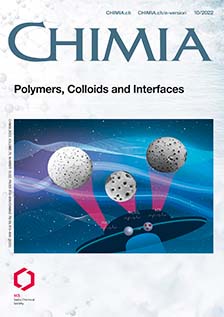Monitoring of On-Site generated Hypochlorite for Water Disinfection
FH-HES Universities of Applied Sciences
DOI:
https://doi.org/10.2533/chimia.2022.871Keywords:
Chlorate, Disinfection by-products, On-site hypochlorite generation, Swimming pool, WaterAbstract
The aim of this study was to better evaluate the impact of on-site electro-generated hypochlorite for water disinfection. For this venture, the daily variability of hypochlorite-generating systems and their performance to produce low disinfection by-products during the formation of hypochlorite were observed. Seven on-site electro-generated hypochlorite installations, were selected at different swimming pool facilities in Switzerland. Active chlorine (AC), the two disinfection by-products chlorate (ClO3-) and perchlorate (ClO4-), and the pH were monitored over several hours. All monitored installations produced significant concentrations of chlorate, related to the measured active chlorine concentration. The median chlorate concentrations ranged between 1.4 to 76.9 µg ClO3-/mg AC during daily monitoring. Perchlorates have been detected only in the installations of one brand that generated concentrations up to 34.9 µg ClO4-/mg AC. For all installations, pH was lower than expected with a median pH of 9.6. Some samples presented even surprisingly acidic pH leading to possible sample degradation. This study clearly shows the weakness of a one-shot sampling to evaluate the quality of on-site electro-generated hypochlorite systems, due to high daily process variations. Additionally, the evaluation of the influence of three process parameters has pointed out that including chlorate aspects during the optimisation stage of on-site generated hypochlorite may significantly reduce chlorate contamination during water disinfection.
Downloads
Published
Issue
Section
Categories
License
Copyright (c) 2022 Swiss Chemical Society

This work is licensed under a Creative Commons Attribution 4.0 International License.







